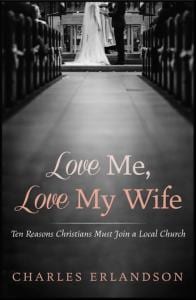 Displays the Christian Mind at Work for a Wide Audience
Displays the Christian Mind at Work for a Wide Audience
I eagerly awaited this book, A Place for Truth, edited by Dallas Willard, and I immediately set to devouring it. On the whole, I thoroughly enjoyed the book and its presentation of Christian Truth but thought that it displayed weaknesses in certain places.
The title, A Place for Truth, comes from Harvard University’s motto, “Veritas,” which is Latin for “Truth.” This volume is a collection of 15 presentations made before the
Veritas Forum, a group originally started at Harvard to help restore to the American university its age-old character as “a place for truth.” The chapters in the book reflect the oral nature of the original presentations, which helps make the articles relatively easy to read (considering the complexity of the topics) which but also presents certain limitations. Because of the blend of learning and readability, I find A Place for Truth to be a very welcome book. It is a book that is simple without being simplistic, profound without being indigestible, and which asks and answers some of the most important questions of life for all. One of the unexpected things I experienced in the book was the large number of narratives that were included as a means of presenting Christian Truth. This is a book well-suited to our postmodern age.
The first three chapters focus on arguments that focus on Truth itself, and they help set the tone and direction for the remainder of the volume. Chapters 4-6 relate to Faith and Science, Chapters 7 and 8 to Atheism, Chapters 9-11 on Meaning and Humanity, Chapter 12 on the Christian Worldview, and Chapters 13-15 on Social Justice.
Overall, it was immensely encouraging to read chapter after chapter of intelligent Christian (most actively engaged in teaching at universities and all of them highly educated) from a variety of universities speaking convincingly and intelligently about Truth and especially Christian Truth. A Place for Truth is a book that can and should be widely read. While containing the thought of Christian intellectuals, the chapters are, for the most part, very readable, largely because of the oral nature of the original presentations. It makes an excellent introduction for Christian college students who want to learn more about how to integrate their faith with their learning, and I can even see it being used in Christian high schools. The educated Christian laymen will also benefit from this book, as well as pastors who might want to read a collection of brief works on relevant contemporary topics. One of the audiences I think the book might serve best is those who are not Christians but want to see a more articulate and informed Christian mind at work.
The chapters, however, are not of equal value or quality. Of the three chapters addressing Truth, I found the one by Tim Keller, “Reason for God: The Exclusivity of Truth,” to be the best. In fact, it’s one of the 3 best chapters in the entire book. Richard John Neuhas’ chapter was not particularly enlightening, while the chapter by Os Guinness presented a lot of good material but, it turns out, too much for so little space. Keller, in his chapter, does a masterful job of presenting 5 ways that people today tend to deal with the exclusive truth claims of religion in order to avoid them. It is a primer on how modern and postmodern people want to do away with Truth, and Keller provides brief but powerful arguments against each of the 5 attacks on Truth.
The 3 chapters on Faith and Science each contain much helpful material, but each has its own weakness. Collins’ chapter spends too much time dealing with background and biography and is not as focused as it could have been, while the exchange between McGrath and Helfand (Christian and atheist) involves an interchange that works better when there is a lot of time and not only a few pages to deal with such complex issues. Ross’ is a fascinating chapter that weaves scientific thought into the story of his conversion to Christ.
Vitz’s look at the Psychology of Atheism is fascinating and deals with the theory of the defective father as a cause of atheism but is a fairly limited look at the psychology of atheism. Dallas Willard’s chapter on “Nietzsche Versus Jesus Christ” is one of the 3 best chapters. In explaining Nietzsche’s philosophy, Willard not only explains much of the foundation for contemporary secular thought but also a stinging indictment of an ostensibly Christian culture that isn’t very Christian. If you want to understand more about why modern and postmodern man thinks and acts the way he does, Willard’s chapter is as good a place to start as any.
The other chapter that I found to be one of the 3 best was the one by N.T. Wright, “Simply Christian,” which is an executive summary of his new book by the same name. “Echoes of a Voice,” deals with kinds of evidence for the God of the Bible; “Staring at the Sun,” is about talking wisely about God; and “Reflecting the Image” concerns how to be a genuine human being. Wright says a lot in the little space allotted him.
I found many of the remaining chapters less valuable (though still worth reading), either because they were on a relatively narrow topic (such as the chapter on Can Robots Become Humans?) or because they didn’t go as deeply into the subject as they might have (such as Sider’s chapter on “The Whole Gospel for the Whole Person”). Poplin’s chapter, “Radical Marxist, Radical Womanist, Radical Love” is a fine reflection on the love of Mother Teresa but the title is sensationalist and not very relevant to Poplin’s discussion. The one other chapter I thought wonderfully provocative and joyful was Begbie’s “The Sense of an Ending,” which artfully presents the Christian story in an unusual way: the sense of ending we expect in music.
While containing some weak spots,A Placefor Truth is, on the whole, a wonderful introduction to how Christian Truth can be brought with power to a dying world which is dying nowhere more than at its universities. Here is an outline of the chapters in the book so the reader can more easily apprehend the scope and sequence ofA Placefor Truth.
Truth
1. Is There Life After Truth? – Richard John Neuhas
2. Time for Truth – Os Guinness
3. Reason for God: The Exclusivity of Truth – Timothy Keller
Faith and Science
4. The Language of God: A Scientist Presents Evidence for Belief – Francis Collins
5. The New Atheists and the Meaning of Life – Alister McGrath and David Helfand
6. A Scientist Who Looked and Was Found – Hugh Ross
Atheism
7. The Psychology of Atheism – Paul C. Vitz
8. Nietzsche Versus Jesus Christ –Dallas Willard
Meaning and Humanity
9. Moral Mammals: Does Atheism or Theism Provide the Best Foundation for Human Worth and Morality – Peter Singer and John Hare
10. Living Machines: Can Robots Become Human? – Rodney Brooks and Rosalind Picard
11. The Sense of an Ending – Jeremy S. Begbie
Christian Worldview
12. Simply Christian – N.T. Wright
Social Justice
13. Why Human Rights Are Impossible Without Religion – John Warwick Montgomery
14. “Radical Marxist, Radical Womanist, Radical Love: What Mother Teresa Taught Me About Social Justice” – Mary Poplin
15. The Whole Gospel for the Whole Person – Ronald J. Sider
You can find out more about the Veritas Forum at http://www.veritas.org/.











